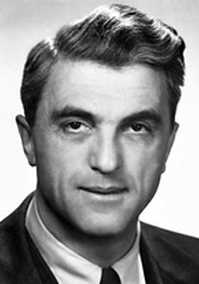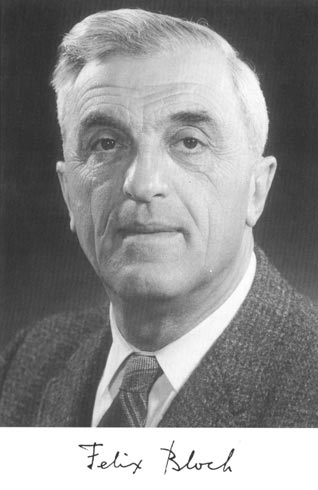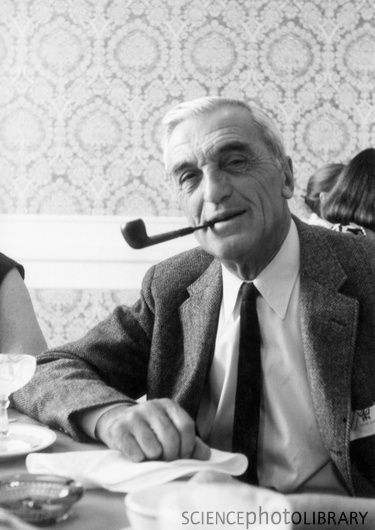<Back to Index>
- Physicist Felix Bloch, 1905
- Dramatist Juan de la Cueva, 1543
- Colonel of the Confederate States Army Cavalry Turner Ashby, Jr., 1828
PAGE SPONSOR



Felix Bloch (October 23, 1905 – September 10, 1983) was a Swiss physicist, working mainly in the U.S.
Bloch was born in Zürich, Switzerland, to Jewish parents Gustav and Agnes Bloch. He was educated there and at the Eidgenössische Technische Hochschule, also in Zürich. Initially studying engineering he soon changed to physics. During this time he attended lectures and seminars given by Peter Debye and Hermann Weyl at ETH Zürich and Erwin Schrödinger at the neighboring University of Zürich. A fellow student in these seminars was John von Neumann. Graduating in 1927 he continued his physics studies at the University of Leipzig with Werner Heisenberg, gaining his doctorate in 1928. His doctoral thesis established the quantum theory of solids, using Bloch waves to describe the electrons.
He remained in European academia, studying with Wolfgang Pauli in Zürich, Niels Bohr in Copenhagen and Enrico Fermi in Rome before he went back to Leipzig assuming a position as privatdozent (lecturer). In 1933, immediately after Hitler came to power, he left Germany, emigrating to work at Stanford University in 1934. In the fall of 1938, Bloch began working with the University of California at Berkeley 37" cyclotron to determine the magnetic moment of the neutron. Bloch went on to become the first professor for theoretical physics at Stanford. In 1939, he became a naturalized citizen of the United States. During WW II he worked on nuclear power at Los Alamos National Laboratory, before resigning to join the radar project at Harvard University.
After the war he concentrated on investigations into nuclear induction and nuclear magnetic resonance, which are the underlying principles of MRI. In 1946 he proposed the Bloch equations which determine the time evolution of nuclear magnetization. He and Edward Mills Purcell were awarded the 1952 Nobel Prize for "their development of new ways and methods for nuclear magnetic precision measurements." In 1954 – 1955, he served for one year as the first Director - General of CERN. In 1961, he was made Max Stein Professor of Physics at Stanford University.